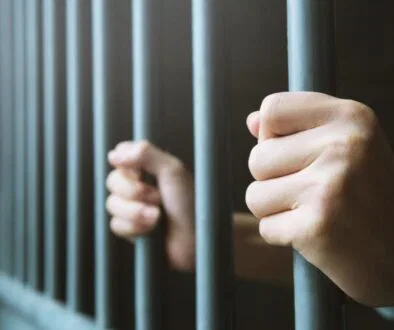The Different Types of Prisons Explained

Published Oct 10, 2021
Crimes and criminals come in varying degrees. Some crimes are more serious and some criminals are more dangerous. Other crimes deserve harsher punishment while some criminals need more psychiatric interventions. This is why we have different types of prisons.
According to prisonpolicy.org, there are more than 7,100 prisons in America consisting of:
-
1,833 state prisons
-
110 federal prisons
-
1,772 juvenile correctional facilities
-
3,134 local jails
-
218 immigration detention facilities
-
80 Indian county jails
Apart from the above, the country also has military prisons, psychiatric hospitals, and civil commitment centers. All of which holds a combined 2.12 million people.
Though the movies usually depict prisons as scary places full of dangerous criminals, it’s not always the case. Prison conditions can vary all throughout the country depending on its security level, inmate demographics, and many other factors.
To give you an idea of prison life in the US, here’s a quick guide on the different types of prisons in the country.
Jail vs. Prison
To better understand the country’s criminal justice system, we need to clear up the difference between a jail and a prison first.
The terms “jail” and “prison” are often used interchangeably when referring to criminal detention facilities. But what many don’t realize is that they refer to two different types of facilities.
According to the Bureau of Justice Statistics (BJS), jails hold inmates for only a short period of time. This includes people who are still awaiting trial and those with sentences of not more than one year. They are usually under the jurisdiction of a sheriff, police chief, or county/city administrator.
Prisons, on the other hand, hold inmates for a long time. This usually includes felons and persons with more than a year remaining in their sentence. Prisons are owned either by the state or the federal government. Though some prisons are operated by private companies contracted by the state.
Federal Prisons vs State Prisons
As their name suggests, federal prisons are owned by the federal government while state prisons are owned by the state. As such, they tend to have different policies and regulations.
Obviously, people who committed federal crimes are detained in federal prisons. This includes white collar crimes, kidnapping, terrorism, and hate crimes among others. While those who broke state law are kept in state prisons. Some violent crimes, though punishable by federal laws, may also be tried at the state level.
Since most federal crimes have longer sentences and no parole, federal inmates tend to spend more time in prison than state prisoners.
Federal prisons also generally have better security than state prisons. Plus, they’re often less populated than state prisons as federal crimes are less common than state-level offenses.
Types of Prisons Based on Security Level
As each inmate poses different levels of security risks, prisons are classified based on their security levels. These are:
1. Minimum Security
Typically reserved for white collar criminals, a minimum security facility look more like a dorm than an actual prison. Inmates held in these facilities are considered non-violent and have very low flight risk. As such, most of them don’t even have fences, and some inmates are even assigned to work in community-based projects.
2. Low Security
According to the Bureau of Prisons (BOP), low-security federal facilities have doubled-fenced perimeters. Like minimum security prisons, they also feature dorm-type or cubicle housing. Though, they have a slightly higher staff-to-inmate ratio.
3. Medium Security
In addition to double perimeter fences, medium-security prisons also have electronic detection systems. They usually hold offenders with prison sentences of more than 30 years and extensive criminal histories. These inmates are housed in individual metal cells with a metal toilet, metal bunk beds, and metal sink.
4. Maximum Security
Maximum security prisons are typically reserved for offenders with violent tendencies and death row inmates. As such, they have advanced security features like reinforced fences and a centralized lock system. Prisoners are housed in individual cells and are only allowed out one hour a day.
5. Supermax Prison
As the name suggests, supermax prisons are the most secure among all types of prisons. They are designed to hold offenders that can’t be housed in lower-security prisons. This includes:
-
high-profile criminals
-
terrorists
-
inmates with a history of violent behaviors in other prisons
-
inmates that pose a serious threat to national security
Inmates in supermax prisons spend their days in what is essentially solitary confinement. They are housed in a 7×12 feet concrete cell and are only allowed out a few hours a week. And every time they go out of their cells, they have to wear leg irons and are escorted by multiple prison staff.
As of this writing, only one federal prison is classified as supermax: the ADX Florence in Florence, Colorado. Several states have also constructed their own supermax prisons either within a prison or as standalone facilities.

Types of Prisons Based on Inmate Demographics
Some prison facilities in the US are designed to hold specific types of inmates. These are:
1. Juvenile Detention Centers
Also known as Youth Detention Centers, juvenile prisons are reserved for offenders below 18 years old. Though the age limit can vary per state. Since they hold youth offenders, programs in these prisons are geared towards education and rehabilitation.
2. Military Prisons
From the name itself, military prisons house military personnel who are convicted in a court-martial. In the US, military prisons have a tier system depending on the offender’s length of sentence. Enlisted military members with less than a year of prison sentence are held in waterfront brigs or correctional custody units. While those sentenced to death or over 10 years in prison are kept in disciplinary barracks.
3. Women’s Correctional Facilities
According to Prison Policy Initiative, there are about 129,000 female inmates in the US as of November 2018. They are housed in various women’s correctional facilities across the country.
In federal women’s prisons, the BOP implements specialized programs to address gender-based needs. This includes the Female Integrated Treatment (FIT) Program which offers integrated treatment for mental illness and substance use disorders. The Bureau also offers productive activities that address needs common to female inmates like domestic violence survival and parenting.
4. Immigration Detention Facilities
People who violate US immigration laws are sent to immigration detention facilities. These prisons are operated by the US Immigration and Customs Enforcement (ICE) though most of them are run by private companies.
Just like in a federal or state prison, these detention centers have set visiting hours. All inmate mails are also thoroughly inspected and screened. Most of these facilities are also located in rural areas which usually makes it hard for families to get in touch with an inmate.
Other Types of Prisons
These facilities don’t really fit the typical definition of prison. But they are still designed to detain people convicted of crimes. Compared with traditional prisons, however, these facilities offer more freedom.
1. Halfway Houses
A halfway house is a transitional facility designed to help ease a prisoner’s re-entry into society. It’s basically just what its name suggests: a halfway between jail and society.
Inmates who are sent to halfway houses are usually those who only have a few months left on their sentence or are completing a probation condition. Halfway house inmates live in groups. They also have to follow specific rules and regulations including curfews, maintaining a job, and attendance to reentry programs.
2. Podular Jails
Also known as a direct supervision jail, podular jails are one of the latest innovations in the country’s prisons systems. Unlike traditional jails, podular jails are designed with a master control area in the center surrounded by jail cells. This eliminates the need for inmates to run down long lengths of corridors just to see what’s going on. The pie-shaped design allows them to see every jail cell from the master control area.
3. Ankle Bracelets
Another innovation in the country’s incarceration system is ankle bracelets for home detention. Also known as digital jails, these electronic bands are strapped to people who are on parole or house arrest. It has a GPS that tracks the offender’s location at any given time. This keeps them from escaping to another state or going out of their detention area. It’s a form of punishment that has earned both praise and criticism both in the US and in other countries.
(Related: What Exactly is a Prison Consultant?)
Advertisement
Save 90% Per Minute On Jail Calls With Us
US prisons charge lots of money per minute for long distance inmate calls. The loved ones of inmates are left to pay this bill. For a ten minute phone call you may find yourself paying over one hundred dollars. With SecurTel, you can reduce this charge to a fraction of the cost and only pay the local calling rate. Make calls from across the US or internationally for the local rate and help your family stay connected during a difficult time. Learn more about how to sign up for inmate calls here.

This Content Is Fact Checked
We have conducted thorough fact-checking on this content in-house. Get detailed insights into our website’s editorial standards by clicking here.

About The Author
Judy Ponio is the lead writer for the SecurTel blog. Her passion for true crime stories and criminal justice has fueled her work and inspired millions of readers around the world.



